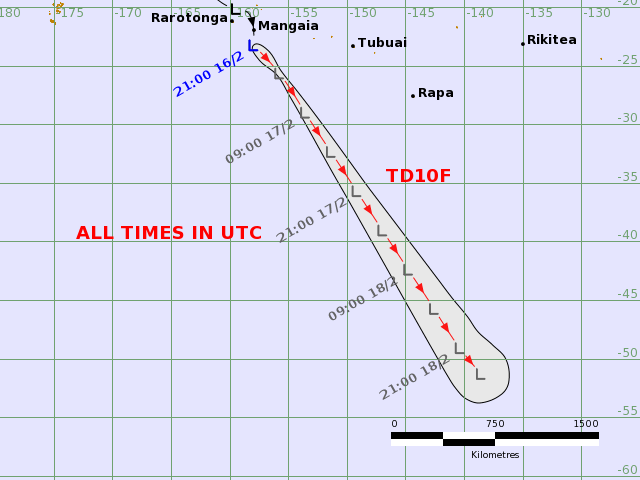Severe Tropical Cyclone LOLA (Cat 4) churns slowly over Vanuatu (Maps + Animations).
24/10/2023 9:10pm

> From the WeatherWatch archives
10:10am Wednesday NZDT — Tropical Cyclone Lola moved into Vanuatu last night as a Category 5 storm and remains Category 4 this morning as it very slowly inches across the nation.
Lola was not only the earliest Category 5 Tropical Cyclone on record for the Pacific Basin – but also the entire Southern Hemisphere.
But the storm that rapidly formed but also fall apart in a similar amount of time.
As of 10am Wednesday Lola remained a Cat 4 storm but the eyewall has collapsed – a sign that the storm has peaked in strength.
The storm will move across Vanuatu today and clear the island group by tonight.
By late this coming week LOLA will be approaching New Caledonia, but will be weakening. It’s likely to lose it’s cyclone status by Friday as it continues to track south towards NZ and moves over cooler waters. It will fall apart this weekend and likely the leftovers will merge with another system in the Tasman Sea. Some severe weather is possible in the upper North Island this Sunday to next Tuesday, but no major storm is in the forecast for NZ.
Lola is currently a significant ‘worst case scenario’ for Vanuatu, not only due to the cyclone being Category 5 but it is slow moving, perhaps only tracking 8kmh tonight which is human walking speed. This slow movement increases the risk of damage.
Winds are currently estimated to be sustained at 200km/h and gusting 250km/h at the centre – but peak winds are starting to drop over the coming hours.
The storm has likely stopped strengthening now and may even show signs of weakening tonight as it interacts with land and a change in atmospheric conditions to the south. It’s still a very serious storm for Vanuatu.
View video updates on Cyclone Lola at WeatherWatchTV on YouTube.

See further down the page for any possible risks to New Zealand and historical maps and updates from us over the past few days.



Tracking does take the storm through northern to central parts of Vanuatu – but strength, timing and tracking are still not locked in. Those in Vanuatu and the eastern Solomon Islands should keep up to date with local authorities over the coming hours and days.
The cyclone is forming 10 days earlier than the official cyclone starts, which runs from November 1 to March 31.
ANY NEW ZEALAND THREAT?
Future tracking southwards is unclear. El Nino tends to put more high pressure between NZ and Australia…a bit like an invisible brick wall in the sky to make it harder for tropical cyclones to reach NZ. However, highs aren’t always continuous in this zone so we’ll be monitoring any possible impact to the New Zealand area later this coming week. It is possible the leftovers of this tropical low may track into or near NZ – but please remember sea temperatures are only just past their very coldest of the year at our latitude, so we are not expecting a tropical storm coming into NZ, it will very likely fall apart or weaken significantly (ie, don’t think this is another Gabrielle for NZ).
At this stage all modelling shows the storm falling apart as it heads out of the tropics and becoming a fairly weak sub-tropical low. High pressure in the NZ area will be the main guiding force. We need to explain this extra NZ detail as anxiety levels and PTSD are real for many following the storms and catastrophic floods earlier this year in the North Island, which some weather forecasters experienced too.
For now, the focus on this storm is very much on the potential issues for northern and central Vanuatu and the eastern Solomon Islands and there are currently no especially concerning long range weather maps for NZ, despite the remnants likely coming our way next weekend. We’ll have more details in our regular NZ weather vids, our next update on Tuesday lunchtime (after Labour Day holiday on Monday).
*WeatherWatch.co.nz is now providing extra Australia-only and Pacific-only updates on top of all our daily NZ content, so we’ll be covering storms for the tropics-only too as we go through this cyclone season. As always, keep up to date with any future local watches and warnings – in this case Vanuatu Meteorology.


Comments
Before you add a new comment, take note this story was published on 24 Oct 2023.





Add new comment